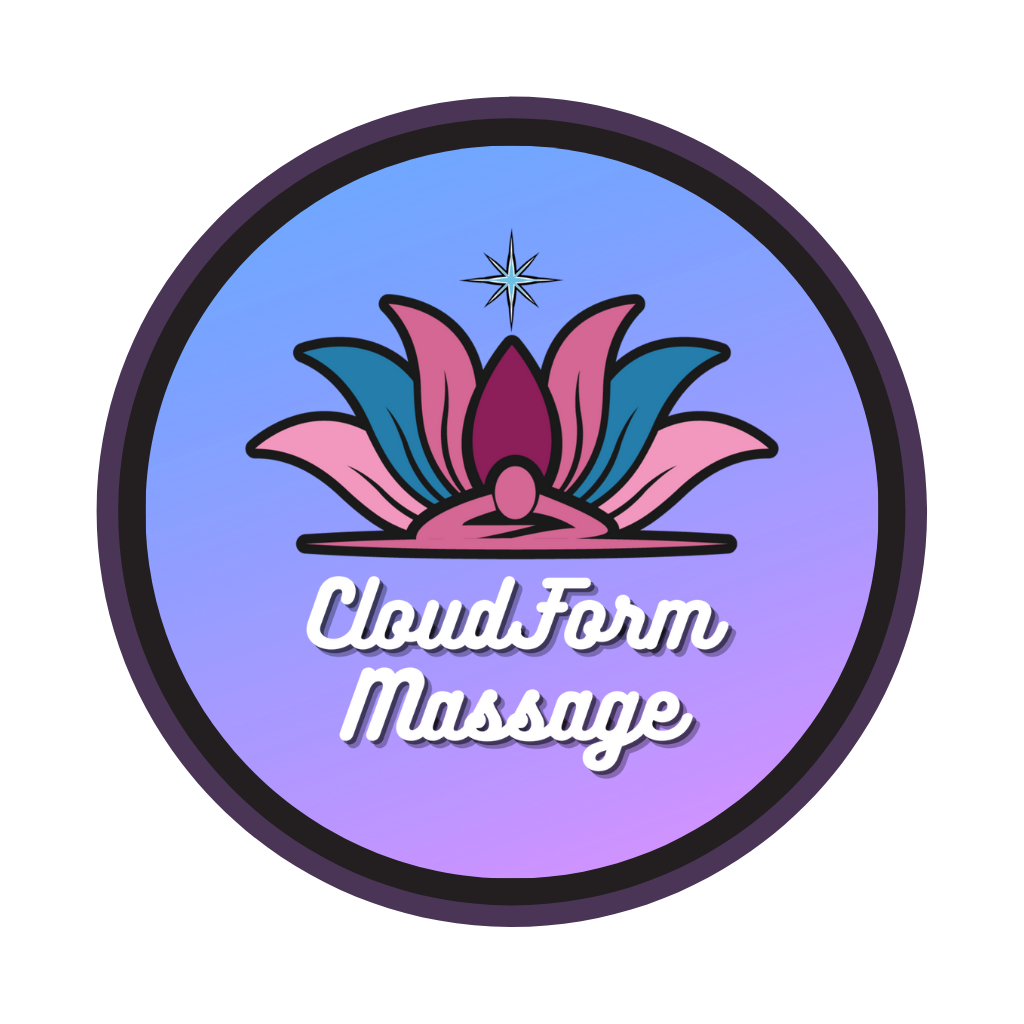
Scoliosis relief & management through Remedial Massage
Relieve tight muscles & sooth overworked ones.
What is Scoliosis?
Scoliosis is a spinal deformity characterized by an abnormal lateral curvature of the spine. It can occur in varying degrees of severity and often develops during childhood or adolescence. Scoliosis can result in uneven shoulders, a prominent shoulder blade, and an uneven waistline. Depending on the severity of the curve, scoliosis can cause pain, discomfort, and reduced mobility, impacting daily life and activities.
Generally, you can provide immense relief for the muscles affected by scoliosis by engaging in regular remedial massage therapy and stretching to open up muscular restrictions.
Common Causes and Risk Factors of Bursitis
The exact cause of scoliosis remains unknown, but several factors have been identified that may contribute to the development of this spinal deformity & it’s resulting aches and pains, including:
Genetics: A family history of scoliosis increases the risk of developing the condition.
Age: Scoliosis often develops during periods of rapid growth, such as adolescence.
Gender: Females are more likely to develop scoliosis and experience curve progression.
Underlying medical conditions: Some neurological and muscular conditions, such as cerebral palsy or muscular dystrophy, can be associated with scoliosis.
What Does Scoliosis Feel Like?
Though scoliosis is usually noticeable, there are many instances where a person will not know they have scoliosis until diagnosed by a professional later in life. A slight or minor amount of scoliosis is often acceptable but it can still affect various muscles & cause pain. Here are some potential signs that you might have scoliosis;
Uneven shoulders or shoulder blades
Asymmetrical waistline or hips
Prominent ribs on one side of the body
Leaning to one side
Pain or discomfort in the back, particularly after extended periods of standing or sitting
Reduced mobility and flexibility
It feels different for everyone but there are definitely common themes of pain and fatigue to differing sides of the back & spine in general.
How does massage improve scoliosis?
Massage therapy at CloudForm Massage can offer several benefits for individuals with scoliosis, such as:
Pain relief: By reducing muscle tension and promoting relaxation, massage therapy can help alleviate pain associated with scoliosis.
Improved circulation: Massage can increase blood flow to the affected muscles, providing essential nutrients and oxygen to support healing and overall spinal health.
Enhanced flexibility and range of motion: Massage therapy can address muscle tightness and imbalances, helping to improve joint mobility and flexibility.
Reduced muscle tension and spasms: Massage can help release tight muscles and relieve spasms that may contribute to scoliosis-related discomfort.
Improved posture: By addressing muscle imbalances and promoting relaxation, massage therapy can support better posture and spinal alignment.
It’s important to understand, massage may not be able to ‘cure’ scoliosis if it is cause by the structure of the spine itself. You will however get immense relief from Remedial Massage Therapy and it may help to reset some of the imbalances among the muscles and joints within the skeletal system.
How do we provide scoliosis relief & pain management?
At CloudForm Massage, our experienced therapists utilize a variety of massage techniques to address scoliosis symptoms and support spinal health, including:
Swedish massage: This gentle technique uses long, flowing strokes to increase circulation, reduce inflammation, and promote relaxation.
Deep tissue massage: By targeting the deeper layers of muscle and connective tissue, deep tissue massage can help release tension and alleviate pressure on the spine.
Myofascial release: This technique focuses on releasing tightness in the fascia, the connective tissue that surrounds muscles and bones, which can help to improve spinal alignment and mobility.
Trigger point therapy: By targeting specific tight spots within muscles, trigger point therapy can help alleviate pain and muscle tension that may be contributing to scoliosis symptoms.
Sports massage: Designed specifically for athletes, sports massage can help to address muscle imbalances, improve flexibility, and prevent injury that may exacerbate scoliosis.
We may use a variety of techniques, massage types, tools & referrals to help you manage the scoliosis pain you experience. We always want to provide you with the best care possible and so we may refer you to a local physiotherapist or osteopath.
Customized Treatment Plans for Scoliosis management
Our therapists at CloudForm Massage are committed to providing personalized, client-centered care. We will work closely with you to develop a customized treatment plan that addresses your unique needs and goals, incorporating massage therapy and complementary therapies to promote optimal scoliosis pain relief and recovery. By taking into account your specific circumstances, preferences, and treatment goals, we can create a tailored approach that maximizes the benefits of massage therapy to get you feeling your best.
Benefits of Massage Therapy for scoliosis
When you incorporate massage therapy into a regular selfcare routine, we can provide long-term benefits for individuals suffering from scoliosis. Some of these benefits include:
Long-term benefits of massage therapy for scoliosis:
Pain relief: Regular massage therapy can help alleviate pain associated with scoliosis by reducing muscle tension, improving circulation, and promoting the release of endorphins, the body's natural painkillers.
Improved flexibility and mobility: Massage therapy can help increase flexibility and joint mobility by relaxing tight muscles and fascia, allowing for improved range of motion and reduced restrictions in the spine and surrounding muscles.
Muscle balance: Massage therapy can help address muscle imbalances caused by scoliosis, strengthening weak muscles and stretching tight ones, which can contribute to improved spinal alignment and reduced strain on the musculoskeletal system.
Stress reduction: Regular massage therapy has been shown to reduce stress levels and promote relaxation, which can be particularly beneficial for individuals living with chronic pain and discomfort associated with scoliosis.
Improved posture: By addressing muscle imbalances and promoting spinal alignment, massage therapy can help improve posture in individuals with scoliosis, reducing strain on the spine and surrounding structures.
Enhanced overall well-being: Massage therapy can contribute to a better quality of life by improving physical function, reducing pain, and promoting relaxation and stress relief for individuals with scoliosis.
Complementary treatment: Massage therapy can be an effective complementary treatment to other scoliosis management strategies, such as physical therapy, bracing, and corrective exercises, enhancing the overall effectiveness of a comprehensive treatment plan.
Why Choose Us to help you?
Read some of our amazing reviews by hundreds of beloved clients
Experienced, Professional, Therapeutic.
At CloudForm Massage, our highly trained and experienced massage therapists are dedicated to providing personalized, effective care for clients with scoliosis. We understand the impact that scoliosis can have on your daily life and are committed to helping you find relief through evidence-based massage therapy techniques.
Our client-centered approach ensures that your unique needs and goals are prioritized, allowing us to develop a tailored treatment plan that addresses the underlying causes of your scoliosis and promotes lasting relief. By incorporating massage therapy into your scoliosis management plan, you can experience the many benefits it has to offer and improve your overall quality of life.
If scoliosis is impacting your life, don't hesitate to contact CloudForm Massage to schedule a consultation with one of our expert therapists. We are here to help you find relief and achieve long-lasting results through comprehensive treatment options and a personalized approach to care. Discover the CloudForm Massage difference and begin your journey to a more comfortable, active life today.

Get SCOLIOSIS RELIEF & Reset Posture
FAQ About Scoliosis
Q1: What is scoliosis? A1: Scoliosis is a spinal condition characterized by an abnormal curvature of the spine, typically forming an S or C shape. It can cause discomfort, mobility issues, and in severe cases, impact lung and heart function.
Q2: How can massage therapy help with scoliosis? A2: Massage therapy can help relieve pain, reduce muscle tension, and improve mobility for individuals with scoliosis. Techniques such as deep tissue massage, myofascial release, and trigger point therapy can target tight muscles, promote relaxation, and improve overall spinal alignment.
Q3: Can massage therapy correct scoliosis? A3: While massage therapy cannot directly correct the spinal curvature caused by scoliosis, it can help manage pain, improve flexibility, and promote better posture, which may contribute to a reduction in the severity of symptoms and improve overall quality of life.
Q4: How often should I receive massage therapy for scoliosis? A4: The frequency of massage therapy sessions for scoliosis will depend on the severity of your condition and your individual needs. Your massage therapist will work with you to develop a personalized treatment plan tailored to your unique situation.
Q5: What other treatments are recommended for scoliosis? A5: In addition to massage therapy, other treatments for scoliosis may include physical therapy, chiropractic care, bracing, or in severe cases, surgery. It is essential to consult with your healthcare provider to determine the most appropriate treatment plan for your specific situation.
Q6: Can massage therapy help with posture issues related to scoliosis? A6: Yes, massage therapy can help improve posture by addressing muscle imbalances and promoting relaxation. By targeting tight muscles and improving flexibility, massage therapy can contribute to better overall spinal alignment and posture.
Q7: Are there any self-care tips for managing scoliosis symptoms? A7: Yes, maintaining a healthy lifestyle, engaging in regular exercise, practicing good posture, and using appropriate ergonomic support can all help manage scoliosis symptoms. Your massage therapist can provide guidance on specific self-care techniques and lifestyle modifications that may be beneficial for your individual situation.
Q8: Is massage therapy safe for people with scoliosis? A8: Generally, massage therapy is safe for individuals with scoliosis, as long as it is provided by a qualified and experienced therapist. It is essential to communicate openly with your therapist about your condition and any specific concerns or limitations you may have. Always consult with your healthcare provider before beginning any new treatment, including massage therapy, to ensure it is appropriate for your specific situation.
What Else Can Help?
Incorporating self-care strategies into your daily routine can help manage scoliosis symptoms and support overall spinal health:
Maintain a healthy weight: Excess weight can place additional strain on the spine, exacerbating scoliosis symptoms.
Exercise regularly: Engaging in regular physical activity can help strengthen muscles, improve flexibility, and promote better posture.
Use proper body mechanics: Practice good posture and use proper lifting techniques to minimize strain on the spine.
Sleep on a supportive mattress: A high-quality mattress that provides adequate support for the spine can help to minimize discomfort and promote better sleep.
Stay informed: Stay up-to-date on the latest scoliosis research and treatment options, and consult with healthcare professionals to ensure you are receiving the best possible care for your condition.
Utilize heat and cold therapy: Applying heat or cold packs can help to alleviate muscle tension and pain associated with scoliosis.
Wear appropriate footwear: Supportive shoes that promote proper alignment of the spine can help to reduce discomfort and improve posture.
Consider alternative therapies: In addition to massage, other complementary therapies, such as acupuncture, chiropractic care, and yoga, may help to alleviate scoliosis symptoms and improve overall spinal health.
Stay hydrated: Drinking enough water can help maintain the health of spinal discs and support overall spinal function.
Manage stress: Stress can exacerbate scoliosis symptoms, so finding healthy ways to cope with stress, such as practicing mindfulness, meditation, or engaging in hobbies, can be beneficial.
By incorporating these strategies into your daily routine, you can actively support your spinal health and work to manage scoliosis symptoms more effectively.
Book With CloudForm Massage Today & Experience Our Difference.
We Look Forward to Seeing You!

